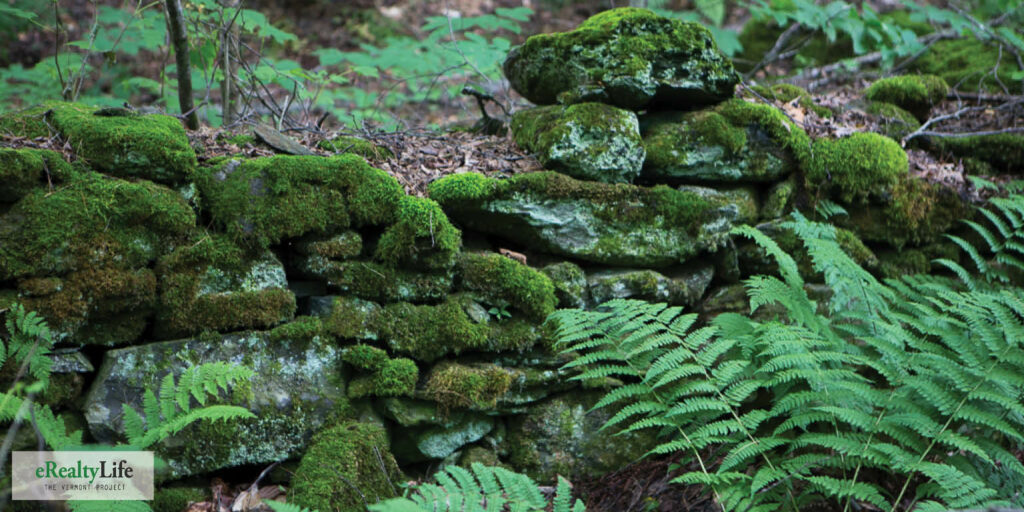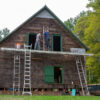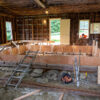Cleanup
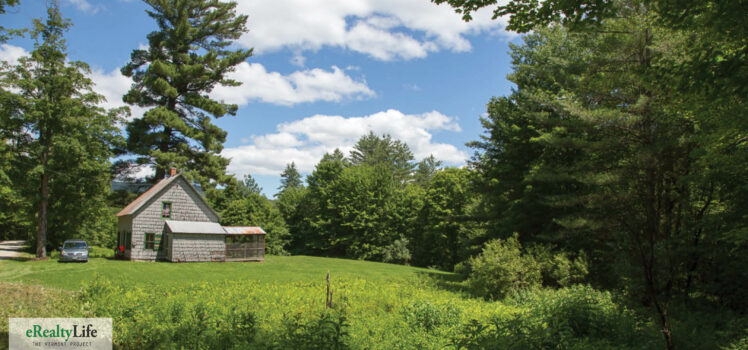
With almost six whole months of ownership under our belts, and now our third visit this year to our remote Vermont property, we see things in warmer weather without snow and ice. We’re struck by how green and verdant everything is, especially when contrasted with our earlier visits in January and March.
We’re staying nearby with family (again) who have generously offered to let us borrow just about anything need. We brought along a mini-van full of equipment and are buying more. The plan is to spend some time on the land and trees, clear out debris inside the house, and take down the chimney, which could be placing an unnecessary burden on the roof.
Interior
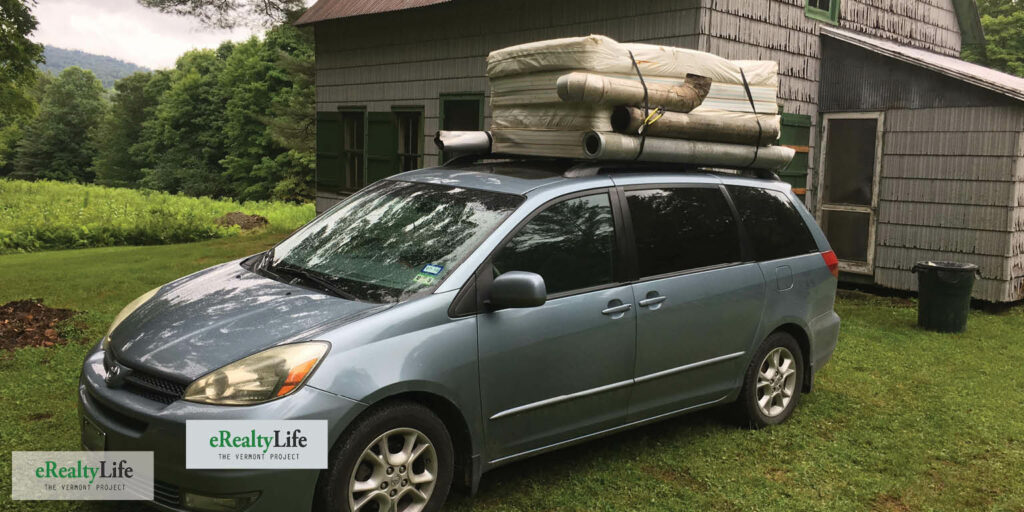
Cleaning the interior is unpleasant, mostly due to years of rodents and insects having the place to themselves. Neighbors say they can’t recall ever having seen people here, much less seeing the doors or shutters open.
It takes about a week to bag up and haul off the trash inside the house, from stove pipes to assorted droppings and mattresses left behind long ago. There is no curbside garbage pickup here. But there is a Saturday morning dump drop-off in a nearby town; we pay by the bag.
Land
It’s difficult to visit anywhere in Vermont without noticing the land. As city mice, we tend to fence our property and keep others away from it unless we invite them. Things are different here. Fences are uncommon and the land is treated like a shared resource where others are free to hike and hunt unless otherwise notified. We like this and it’s one of the reasons we’re here.
We’re thinking the house needs a lot of help, but our land needs much more. The seller even apologized for not being able to keep the encroaching saplings at bay. We learn there was once an apple orchard near the meadow where a local tells us he learned to hunt grouse as a child. Deadfall is everywhere and there are thousands of saplings leading the march to fill in the open meadow.
Long ago, stone walls were less about fencing and more about clearing land. We find some stone walls, mostly ruins and remnants, but they’re almost invisible, buried among the brush and forests. It would be great to reveal the old apple trees, stem the tide of advancing trees, and clear some brush. Turns out this is very physical work for which we are not prepared. For all the time we invested trimming trees, cutting brush and burning slash, our hard work is hardly even noticeable. More lessons learned.
Chimney

The chimney mortar has begun to fail and there’s no liner, just bricks stacked around a relatively small rectangular shaft from the second floor through the tin roof. We’ve brought along a heavy folding ladder and a red ridge hook. We borrow two more ladders and a safety rope with harness.
Right away we realize the roof is much higher than it looks; we should have measured the wall and roof. Only one of the three ladders can reach the eve and the other falls short of reaching the peak. The ridge hook works as expected. Using only one ladder, it wobbles on the roofing material. One of us is assigned to “death watch” — if something happens it will take a while to get help because there is no cellular service and the only place to secure the other end of the safety rope is to the van’s trailer hitch. What could go wrong?
Fortunately, a contractor friend has coached us on a plan to remove the bricks. Those on the exterior of the roof are thrown onto the yard below. On the interior of the house, where most of the bricks are, we arrange long-abandoned mattresses on the floor upstairs to soften the blow of the bricks being dropped. Once on the mattresses and floor, we gather up bricks by hand and throw them out one of the second floor windows into the yard below. Unlike climbing onto the roof, this part goes mostly as planned.
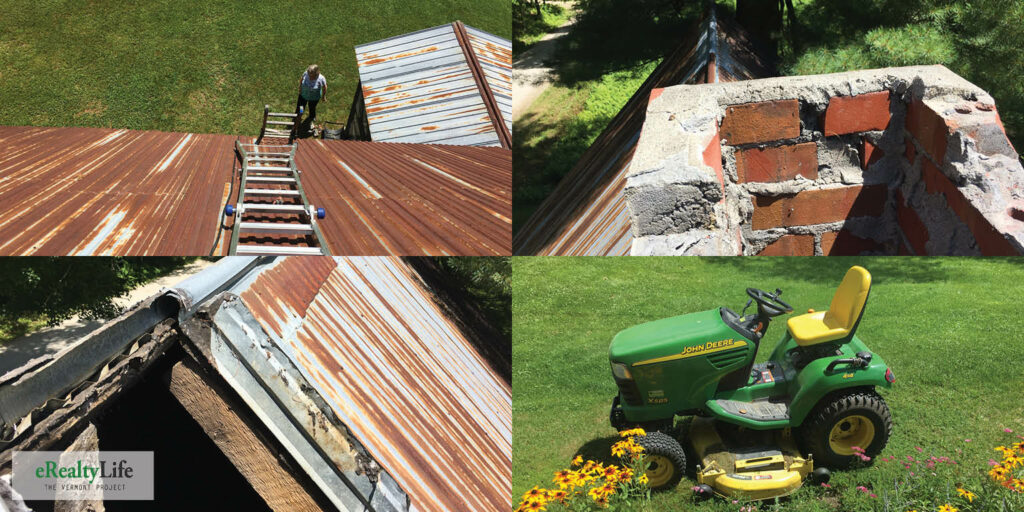
We’d hoped to save the bricks for interior renovation, or maybe for use with a future wood stove, but are sad to realize that they, like most everything with this house, are of little significance. The bricks crumble easily and there are few left whole. But the bricks are heavy, there’s more of them than we thought, and the little red wagon we had planned to move them in, well, was a joke. Our white knight arrives in the form of a supportive, and sympathetic, family member on an iconic John Deere lawn mower pulling a utility trailer. A red wagon — what in the hell were we thinking?!


